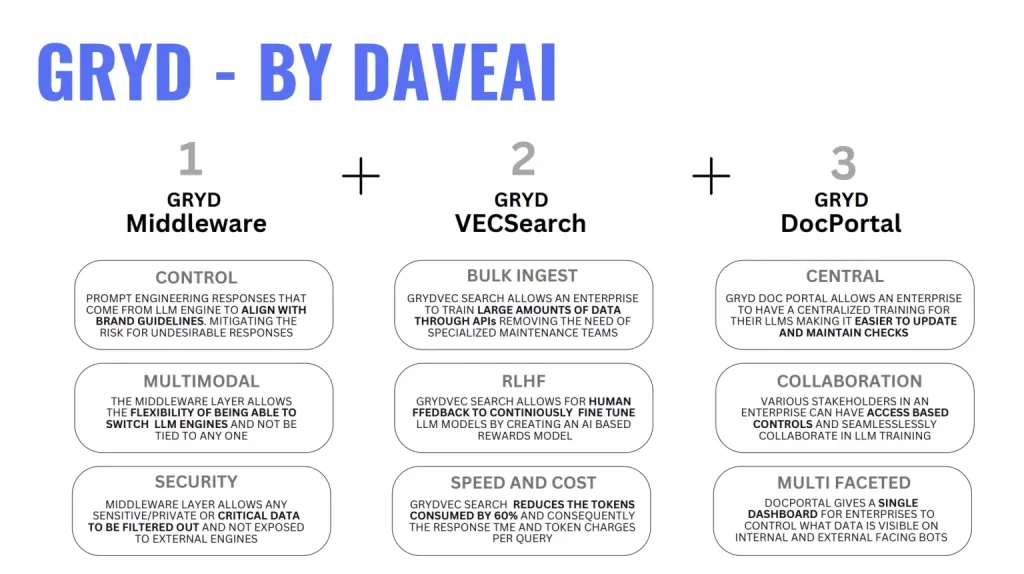Is Your Use Of Generative AI Technology Reaching Its Full Potential?
As brands strive to stand out amidst the noise and capture the attention of their target audience, the integration of AI has become increasingly essential. Generative AI, a subset of AI, has garnered attention for its remarkable ability to create content autonomously, mimicking human-like creativity. This technology has become so result oriented that every enterprise is utilizing it some way or the other today.
This technology transcends mere automation to become a catalyst for innovation across various industries.
Generative AI Technology And Its Role In Early Brand Engagement

- Personalization: Generative AI allows enterprises to tailor content and interactions to individual preferences and behaviour.
- Immersive Experiences: By leveraging generative AI, enterprises can create interactive and immersive experiences that captivate users and encourage deeper engagement with their brand.
- Dynamic Content Creation: Generative AI enables the automatic generation of dynamic content such as personalized recommendations, interactive stories, and virtual experiences.
- Real-time Interaction: With generative AI, enterprises can engage with their audience in real-time, providing instant responses to queries.
- Brand Consistency: Generative AI ensures brand consistency by generating content and interactions that align with the brand’s voice, style, and values.
- Early Engagement: By leveraging generative AI technology, enterprises can engage with their target audience at an early stage of their journey, capturing their interest and attention before competitors do.
Generative AI Technology Use Cases To Drive Early Brand Engagement
1. Sales & Customer Experience Transformation
Conversational AI – Sales Bot: Integrating a chatbot with a website can significantly enhance CX by providing instant assistance and personalized recommendations. Generative AI-powered sales bots leverage NLP to understand and respond to user queries.
Virtual Sales Avatar: A virtual AI avatar provides a human-like interaction experience. These avatars offer personalized product recommendations, addressing customer queries, and providing assistance throughout the sales process. With Generative AI technology, enterprises can create virtual sales avatars that engage customers in meaningful conversations.
Interactive Product Demonstrations: Generative AI technology accelerates the creation of interactive product demonstration videos, enabling enterprises to showcase their offerings in immersive ways. By leveraging avatar-assisted demonstrations, enterprises can provide customers with a realistic preview of their products, highlighting key features and benefits. This approach not only enhances the customer experience but also accelerates the sales cycle by fostering deeper understanding.
Virtual Product Advisor: Training an avatar to serve as a virtual product advisor empowers enterprises to deliver personalized recommendations to customers. By analyzing user queries and preferences, the virtual product advisor can address specific concerns. This human-like interaction experience enhances trust and loyalty.
2. Image AI and Video AI for Marketing Content Creation
Image AI – Customer Engagement: Generative AI enables enterprises to leverage image AI technology to enhance customer engagement and visualization. By enabling customers to visualize products in different contexts and environments, enterprises can create immersive experiences that resonate with their target audience. Whether it’s visualizing a bike in Leh or a jeep in an off-road location, image AI technology transforms the way customers interact with products, driving excitement and interest.
Image AI and Video AI – Marketing Content Creation: Generative AI-powered image and video creation tools empower marketers to produce personalized and engaging content at scale. By leveraging public models moderated by DaveAI’s visualization engine, enterprises can create compelling image and video ads that resonate with their target audience. Whether it’s creating personalized product ads or dynamic marketing campaigns, image and video AI technology enable enterprises to captivate customers and drive brand awareness.
3. Knowledge Management & Training Reinvention
Knowledge Management Bot: Generative AI transforms knowledge management processes by enabling interactive bots to query entire knowledge bases using natural language. This empowers users to access relevant information quickly and efficiently, enhancing productivity and decision-making. By leveraging Generative AI-powered knowledge management bots, enterprises can streamline internal workflows, facilitate knowledge sharing, and drive operational efficiency.
Community Bot: Creating communities from existing customer bases moderated by Generative AI-powered bots fosters collaboration. By leveraging social messaging tools such as WhatsApp or enterprise apps, enterprises can build vibrant communities where customers can interact, share insights, and seek support. This approach strengthens customer relationships.
Image AI – Product Design Companion: Generative AI enables product designers to draw inspiration from AI-generated imagery for product design. With in-house models ensuring data security, enterprises can explore a diverse range of design possibilities and accelerate the ideation process. By leveraging image AI technology, enterprises can create compelling product designs that differentiate their offerings in the market.
Generative AI technology serves as a catalyst for early brand engagement by enabling enterprises to deliver personalized and immersive experiences to their target audience.
Challenges Associated With Generative AI Technology For Brand Engagement
Every technology adoption comes with certain challenges. So does Generative AI. Enterprises leveraging Generative AI technology encounter common challenges that require careful navigation. The challenges include:
- Ensuring the quality and consistency of AI-generated content can be challenging. Generative AI systems may produce content that lacks coherence, relevance, or accuracy.
- Generative AI raises ethical concerns regarding the authenticity and transparency of content creation.
- Generative AI relies heavily on data inputs to generate content, raising concerns about data privacy and security.
- Generative AI models may inadvertently perpetuate biases present in the training data.
- Scaling generative AI solutions across multiple channels and platforms can be complex, requiring seamless integration with existing systems and workflows.
- Implementing and managing generative AI technology requires specialized expertise and resources.
- Generative AI in brand engagement must adhere to various regulatory frameworks governing advertising, marketing, and data protection.
DaveAI has developed GRYD – a Generative AI Middleware Hub designed to address these complexities and limitations associated with AI-driven brand engagement.
Generative AI Technology: Overcoming Limitations With GRYD
What if we told you that the very LLMs you rely on to enhance your chatbot communications might be holding you back? It’s a bold statement, but consider this: while popular language models available in the market today undoubtedly offer incredible capabilities, many enterprises are unknowingly underutilizing their potential.
Think about it. You’ve invested in these language models to improve customer interactions. Yet the chatbots are only speaking a language of their own and sometimes producing content that is not relevant to the conversation AT ALL.
Here’s the thing: language models aren’t one-size-fits-all solutions. LLMs require fine tuning, customization and strategic implementation to truly make an impact.
So, what if there’s a better way? What if there’s a way to harness the full potential of these language models, customizing responses to brand related conversations and driving even greater success for your business?
GRYD serves as a comprehensive solution, offering enterprises a centralized platform to streamline the deployment, management, and optimization of generative AI technology. By seamlessly integrating with existing systems and workflows, GRYD empowers enterprises to overcome common obstacles.
See it in action: GRYD
GRYD is made up of 3 layers:

- GRYD Middleware
- GRYD VecSearch
- GRYD DocPortal
GRYD Middleware
The GRYD Middleware layer serves as the backbone of the GRYD platform.
What is a middleware layer?
A middleware layer refers to software that acts as an intermediary between different applications. It facilitates communication, data exchange, and integration between different elements by providing a common interface and set of services. The middleware layer abstracts the complexities of the underlying infrastructure. This allows applications to interact with each other seamlessly without needing to understand the specific details of their environments.
This Layer Comprises Of Three Key Components:
a. Control: One of the primary functions of the GRYD Middleware layer is to exert control over the generative AI processes, ensuring that the responses generated align closely with the brand guidelines. To achieve this, the Middleware layer incorporates prompt engineering mechanisms that intercept responses generated by the LLM engine and modify them as necessary to meet predefined criteria. This proactive approach helps mitigate the risk of undesirable or off-brand responses.
b. Multimodal: Another essential feature of the GRYD Middleware layer is its multimodal capability, which enables seamless integration with multiple LLM engines. Unlike traditional generative AI platforms that are often tied to a single LLM engine, GRYD Middleware offers enterprises the flexibility to switch between different engines based on their specific requirements and preferences. This versatility empowers enterprises to leverage the strengths of various LLM engines and adapt their AI strategies dynamically to evolving needs and opportunities.
c. Security: The GRYD Middleware layer addresses this concern by incorporating robust security mechanisms that safeguard data privacy and integrity. The Middleware layer acts as a filter, intercepting and screening all data inputs before they are exposed to external LLM engines. This approach allows enterprises to identify and remove any sensitive or critical data. This ensures that only sanitized data is processed by external engines. By mitigating the risk of data exposure and unauthorized access, the Middleware layer enhances the security posture of the solution.
GRYD VecSearch
GRYD VecSearch offers advanced capabilities for data management, model fine-tuning, and optimization. This layer consists of three key functionalities:
a. Bulk Ingest: One of the primary features of GRYD VecSearch is its ability to facilitate bulk data ingestion through APIs. This eliminates the need for teams to manage and process large datasets manually. Enterprises can seamlessly train their LLM models with extensive volumes of data by leveraging GRYD VecSearch’s bulk ingest capabilities. This streamlined process accelerates the training and optimization of LLM models. This enables enterprises to stay ahead of evolving market trends and consumer preferences without compromising efficiency or scalability.
b. RLHF (Reinforcement Learning with Human Feedback): GRYD VecSearch leverages reinforcement learning techniques with human feedback to continuously fine-tune LLM models and enhance their performance. By creating an AI-based reward model, GRYD VecSearch enables enterprises to integrate human feedback seamlessly into the training process. This allows for iterative improvements and optimization of models over time. This iterative approach ensures that LLM models adapt dynamically to changing contexts and user preferences.

c. Speed and Cost Optimization: GRYD VecSearch focuses on optimizing speed and cost efficiency in AI-driven brand engagement initiatives by reducing token consumption and response times. By implementing efficient algorithms and data structures, GRYD VecSearch minimizes the number of tokens consumed per query by up to 60%. This results in significant cost savings for enterprises. The streamlined architecture of GRYD VecSearch enhances response times. This enables faster and more responsive interactions with users. This combination of speed and cost optimization enhances the overall performance and cost-effectiveness of the solution.
GRYD DocPortal
GRYD DocPortal is designed to streamline and centralize the management, training, and deployment of LLM models within enterprises. This layer encompasses three key functionalities:
a. Centralized Training: A centralized training environment for LLM models facilitates seamless updates and maintenance checks. By centralizing training processes, enterprises can ensure consistency and coherence across different iterations of their LLM models. This centralized approach simplifies version control, reduces the risk of discrepancies, and streamlines the deployment of updated models to production environments. Enterprises can leverage GRYD DocPortal to iterate and refine their LLM models iteratively. This ensures continuous improvement and alignment with evolving business needs and objectives.
b. Collaboration: GRYD DocPortal fosters collaboration within an enterprise by offering access controls and permissions management features. With granular access controls and role-based permissions, enterprises can define and enforce access policies that govern who can view, edit, or contribute to LLM training projects. This collaborative approach encourages knowledge sharing, cross-functional collaboration, and alignment of objectives.
c. Multi-Faceted Control: GRYD DocPortal provides enterprises with a single dashboard interface to control the visibility of data. This multi-faceted control allows enterprises to manage and customize the content of their bots from a centralized location. This feature empowers enterprises to maintain consistency and coherence in their bot interactions while adapting dynamically to changing business requirements and user preferences.
Intrigued and want to know more? Contact us today!



